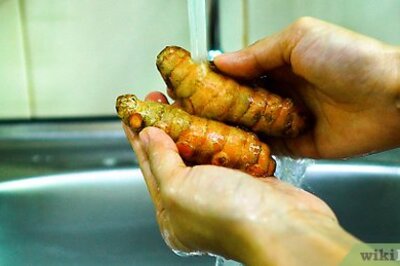
views
X
Research source
Taking the Proper Precautions
Check the rug's label. Lift the corners of your rug to reveal the rug's label. Usually, on the label, it will have instructions on the safest way to clean your Oriental rug. Rugs can be made of silk, wool, cotton, or synthetic material and each requires a certain degree of finesse when cleaning. Cotton and wool rugs are generally more durable and easier to clean. If you have a silk rug, consider taking it to a professional instead of cleaning it yourself in the case of severe stains.
Vacuum and tend to the carpet regularly. Vacuuming your rug at least once a week will lift recent debris and dirt from it and keep it smelling and looking new for a longer time. Vacuuming also prevents the wool fibers in your rug from becoming packed down. Do not frequently vacuum antique or silk oriental rugs as it can damage them and reduce their value.
Keep your rug out of direct sunlight. Oriental rugs can be prone to sun damage, so keep it away from windows if you can. Keeping an oriental rug in the sun will cause the colors to fade over time. If your rug has to be in direct sunlight, rotate it at least once a month. While the colors are still likely to fade, at least they will fade evenly.
Test to see if your carpet is colorfast. Some carpets are colorfast and won't bleed when wet, while others will. If the rug's label reads "dry clean only," then there's a good possibility your rug is not colorfast. If you want to test your rug, saturate a small corner of the carpet with room temperature water, then press on it with a clean white cloth. If there is dye on your rag, then your carpet is likely to bleed if you clean it yourself. In the case that your carpet is not colorfast do a light cleaning but avoid getting your carpet wet or using chemical cleaners on it. If you need to deep clean a carpet that is not colorfast, your best option would be to bring it in to be professionally cleaned.
Move your furniture around occasionally. Heavy pieces of furniture that sit on top of your oriental rug can work down the fibers and damage your carpet over time. To prevent this, rearrange your furniture every six months. This will even out the wear and tear on your rug and increase its longevity.
Doing a Quick Cleaning
Sweep your rug. Use a broom with straw bristles or a carpet sweeper to do the initial cleaning of your rug. Sweep in one direction from end to end. Don't rub your broom back and forth because you could end up damaging it. Once you're done sweeping the entirety of the rug, repeat the cycle and go over it a second time. Electric carpet sweepers use static electricity to pick up dirt and are the safest method for quickly cleaning an antique oriental rug.
Vacuum the rug on both sides. Lay out your rug in an empty area and vacuum over the rug slowly to remove excess abrasives, hair, and dirt that can damage your rug over time. Repeat this process three or more times to get all the dirt and debris from the rug. Avoid the rug's fringes because they can become stuck in the vacuum's sweeper. Once you're done vacuuming, flip the rug over and repeat the process on the other side. Make sure you vacuum in the direction of the rug fibers, not against them. When cleaning an expensive or antique rug, make sure to use the carpet tool because a revolving brush can damage your rug and hurt its value.
Beat and shake your rug outside. If you can pick your rug up, you can take it outside and shake it to remove embedded dirt and other particles. If your rug is too big to shake, hang it on a clothesline and beat it with your hands. You should see the dust and dirt come off of the rug as you do this.
Spot clean your rug. It's best to tend to spills as soon as they occur because if they dry it will be much harder for you to get the stain or smell out of your rug. As soon as the spill occurs blot up as much of the liquid as you can, with a paper towel or clean rag. Once you've soaked up the spill, dampen a rag and use cold water to blot the stain again. Do not rub back and forth on the spill because you could end up rubbing the stain deeper into the carpet.
Performing a Deep Cleaning
Vacuum both sides of the rug. Bring your oriental rug outside so that you can lay it out on a flat surface. Sweep and clean the area before you begin to clean your rug. Vacuum the rug until most of the dirt and debris is lifted from it, then flip it over to the other side and repeat the process. After you vacuum, shake the rug to remove any additional dirt or debris. You can also use an electric sweeper if your vacuum is not effective.
Use a garden hose and spray the rug with cold water. Soak the entirety of the carpet on one side then flip it over and spray the other side with water. You should only have to do this for a few minutes on each side for your oriental rug to become saturated with water.
Fill a bucket with cold water and a mild liquid soap. You can use a mild liquid detergent or dish soap to clean your rug. Fill a bucket with one gallon of cold water and three tablespoons of your mild soap. Mix the solution together in your bucket. You can also use a mild shampoo for oriental rugs that are made from wool.
Test your solution by cleaning a small part of the carpet. You can use a long haired brush or a non-shedding sponge to clean your carpet. Dip your sponge or brush into your water and soap solution until it's saturated and lightly go over a small part of the rug. Wait up to ten minutes to see if the cleaning solution has an adverse effect on it before proceeding to the next step. If the cleaning solution is changing your carpet's color or making the colors bleed, stop cleaning it and take it a professional.
Clean the rest of your rug. Lather your rug in the direction of the nap, or so that the fibers lay down, opposed to sitting up. Lather your carpet enough to create suds on the surface of the rug.
Rinse your rug with your garden hose. Rinse the remainder of the cleaner off with the garden hose. Once you're done doing one side, flip the rug over and rinse the other side of it. The suds on the top of the rug should be washed off thoroughly before drying.
Dry your oriental rug thoroughly. Wet rugs can build mildew over time and create a bad odor. Once you're done rinsing your rug, it's important that you allow it to dry before putting it back to where it belongs. Use a squeegee to squeeze the rest of the water out of your rug, then allow it to dry flat on the ground. Remember to flip your rug over so that both sides can dry. If drying is taking too long try pointing a fan on to quicken the process.
Using Alternative Methods
Use talcum powder to remove unwanted odors. After vacuuming your rug thoroughly, sprinkle some talcum powder on the surface and allow it to sit on the rug overnight. The powder will absorb unwanted odors left by pets or smoke. The next day, use your vacuum to lift the powder from your carpet. You can purchase talcum powder at many different department stores.
Use vinegar, water, and detergent to remove pet or coffee stains. Mix 1/4 cup (59.1 mL) white vinegar and 1/2 tsp (2.5 mL) liquid dishwashing detergent with 2 cups (473.17 mL) of room temperature water in a bucket and use it to remove harder stains. The vinegar's acidity prevents the colors in your carpet from running and can eliminate unwanted odors.
Consider contacting a professional rug cleaner. If your rug is expensive, made of material like silk, or has sentimental value, it may be a good idea to take it to a professional rug cleaner rather than trying to do it yourself. Carpet cleaners have years of experience working with different types of rugs and will know the best course of action for your problem. While it will cost money, it may be worth it so you can avoid repairs in the future.




















Comments
0 comment